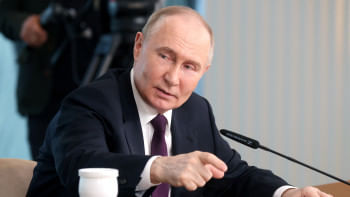Why the long lines and confusion over Covid-19 vaccines?

For the past week or so, we have been hearing of experiences from the latest vaccination drive. People were forced to queue for hours, often only to find that the centre has run out of vaccines. Some are claiming that there is preferential treatment—the "better-connected" are cutting queues. Many had registered for vaccinations on the Surokkha app, but when the announcement came for the mass drive, they were confused. Can they go for the walk-in mass drive if they are already registered, or do they have to wait until they get an SMS?
In an informal experiment, we requested a group of our friends facing this confusion to call the 333 helpline and confirm if registered people can go for walk-ins. Each person had to make repeated calls for over several hours, only to find the helpline busy. At the end of the day, only one person could get through to get the response that registered people who have not received the SMS are not eligible for the walk-in vaccination. Amongst all this confusion, people showed up at the centres from the early hours of the morning, many without masks, sometimes for days in a row, to get the much-coveted vaccine. This is the case not only in places outside Dhaka where logistics and management capacities are low. We saw pictures of people standing in long lines in the rain in Dhaka as well, where the facilities are better than elsewhere in the country.
This was not the scenario only a few months ago. In February this year, when Covid-19 vaccines first came to Bangladesh, we had many apprehensions about vaccination management. In fact, many sceptics predicted mismanagement and chaos. We feared that the socially and politically connected would get preference, and regular citizens would be deprived, and that information about how and where to get vaccines will be confusing. We thought there would soon be a black market where we would have to pay high prices for vaccines, with no assurance of authenticity. We predicted that there would be long queues and waiting times, with thousands of people fighting to get it.
However, to our pleasant surprise, none of this happened during the first round of the vaccination programme, and the vaccine experience was found to be better than what most people had anticipated. There were no long waits, no chaos at the centres, and no undue preference of one citizen over the other. Volunteers at the centres were there to help, and seating arrangements with social distancing were available. This early experience put many of our skeptical anticipations to rest and we congratulated the government on their success. Much to our disappointment, just when we thought Bangladesh had figured out how to manage mass vaccination, the scenario drastically changed for the worse.
Why is the already tried and tested system failing now? One possible reason may be the number of vaccines being delivered daily. In February this year, the daily vaccination rate was, at most, 2.5 lakh doses per day. In comparison, on August 8, more than 30 lakh doses of the vaccine were administered. The daily numbers administered now, compared to April, have increased over 13-fold.
Before the second wave began, people were hesitant about taking the vaccine, and the rate of infection was low prior to the second wave. With low demand, vaccine centres were mostly empty and operating below capacity till April/May. As more people gained confidence in the vaccine over time, and with the high infection rate of the current second wave, the demand for vaccines has risen. Added to that, the age bar for the vaccine has been lowered, increasing the number of people who are eligible for it. With some disruptions in the supply of vaccines between May and July, there was also a backlog of registered people waiting for their shots. So the mismanagement that we witnessed recently is likely a result of vaccine centres operating above capacity. If that is the case, the possible outcomes of large crowds gathering for vaccines, dissatisfied with the waiting time, must be considered seriously. It may not take long for the citizens to forget the successful vaccine management in the first round.
The vaccination drive for Covid-19 is here to stay for some time, with a possibility of boosters in the long term. It is important to have a clear understanding of our capacity to plan how to administer vaccines efficiently without citizens suffering, and estimate by how much we need to increase capacity to face the upcoming demand for this service. For the time being, given the risks of infection, it is urgent to devise a plan with government and non-government actors on how to avoid crowds and chaos at vaccination centres. Systematically providing appointments to those who registered on the app and deploying an adequate number of guards at vaccination centres to ensure social distancing could be some of the immediate measures. If we have walk-in vaccination drives, the centres must have adequate stock so that people do not have to return without being jabbed. Turning a Covid-19 vaccination drive that ultimately aims to reduce infections into a potential source of spreading the disease is something we must prevent.
Mehnaz Rabbani is the Head of Operations, Strategic Engagement and Partnership, and Faruq Hossain is a Senior Research Associate at BIGD, BRAC University.

 For all latest news, follow The Daily Star's Google News channel.
For all latest news, follow The Daily Star's Google News channel. 



Comments